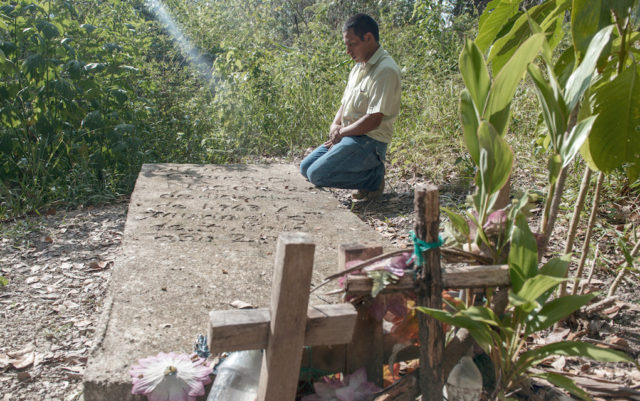
“It’s difficult to reconcile yourself to the fact it may be your last day, your last moment, you know? But my spirits are up again. … We keep on going. Despite everything, we keep on going.” — Tomas Gómez, Honduran environmental activist
The March 2016 assassination of Honduran environmental activist Berta Cáceres led to a global outcry against the violence environmental and indigenous activists around the world face everyday. But in the year since her death, hundreds more activists have been killed, and countless others face persecution as large-scale development projects threaten the land and natural resources they hold dear.
“We hear every couple of months another prominent activist that is murdered, and I’m sure there are many that we never hear about,” says Peter Kostishack, director of programs for Boulder-based Global Greengrants Fund, which supports grassroots environmental actions throughout the world. “There are obviously certain countries and parts of the world where it’s particularly dangerous to be an environmentalist. But also, the murders are part and parcel of a larger set of constraints.”
Global Witness, a nonprofit investigating global human rights and environmental abuses, reports that 2015 was the most dangerous year on record for environmental activists, with 185 documented murders. Ben Leather, campaigner for the organization, says that while Global Witness is still confirming the data, more than 200 activists were killed last year, including Cáceres.
And this doesn’t include those already murdered in 2017, such as Mexican environmental activist and former Global Greengrants grantee Isidro Baldenegro López, who was gunned down in January. For decades, Baldenegro had fought deforestation around the ancestral lands of his indigenous Tarahumara people in the western Sierra Madre mountains. And only a couple days after Baldenegro’s assassination, Sebastian Alonso, 72, died of gunshot wounds sustained while protesting a hydroelectric dam in Guatemala.
“It’s never been more important to defend our planet and yet it’s never been more dangerous to do so,” Leather says.
Cáceres reported 33 death threats to authorities before her assassination, he continues, and yet the Honduran authorities failed to protect her. She was known for her outspoken yet peaceful campaign against a hydroelectric project near her home, and was awarded the prestigious Goldman Environmental Prize in 2015 for her efforts. She was also a Global Greengrants grantee.
But since her death, at least three members of her organization have been killed, according to Global Witness, and many others have been threatened, including Tomas Gómez who now runs the nonprofit in Cáceres’s absence.
“Honduras is emblematic,” he says. “The factors behind the attacks are corruption around large-scale economic projects on the one hand … And on the other hand, the complete lack of consultation of the communities that will be affected by the environmental degradation of those projects.”
Assassinations are just one part of the equation, Kostishack adds. There’s also the increasing criminalization of indigenous and environmental activists who speak out against governments and corporations, which has led to prison sentences and the closing of environmental organizations opposed to corporate development of natural resources.
“We look at all of these things together, the violence, the criminalization, the closing civil society space, and they’re all parts of a larger trend,” he says.
In response, Global Greengrants recently implemented a $40,000 fundraising campaign to address the immediate needs of activists under threat around the world.
“We’re trying to make more resources available both on the side of protecting and preventing violence and arrests of activists when it’s needed. And also to strengthen the security protocol and practices of local organizations that we support,” Kostishack says. “And of course to support groups that are dealing with legal needs.”
Western countries aren’t immune, either, both Leather and Kostishack say. Kostishack specifically cites the environmental and indigenous protests in opposition to the Dakota Access Pipeline that took place last year near the Standing Rock Sioux Reservation in North Dakota, which were met with militarized law enforcement and multiple arrests. Leather points to proposed laws in multiple states that could criminalize the social protest and activism that has been such an important part of the environmental movement for decades.
“The killings are the sharp end of a broader wave of repression of environmental activism,” Leather says. “While the violence is at the worst levels in Latin America, this is part of a trend of repression that is truly global, that extends to the countries that we live in.”














